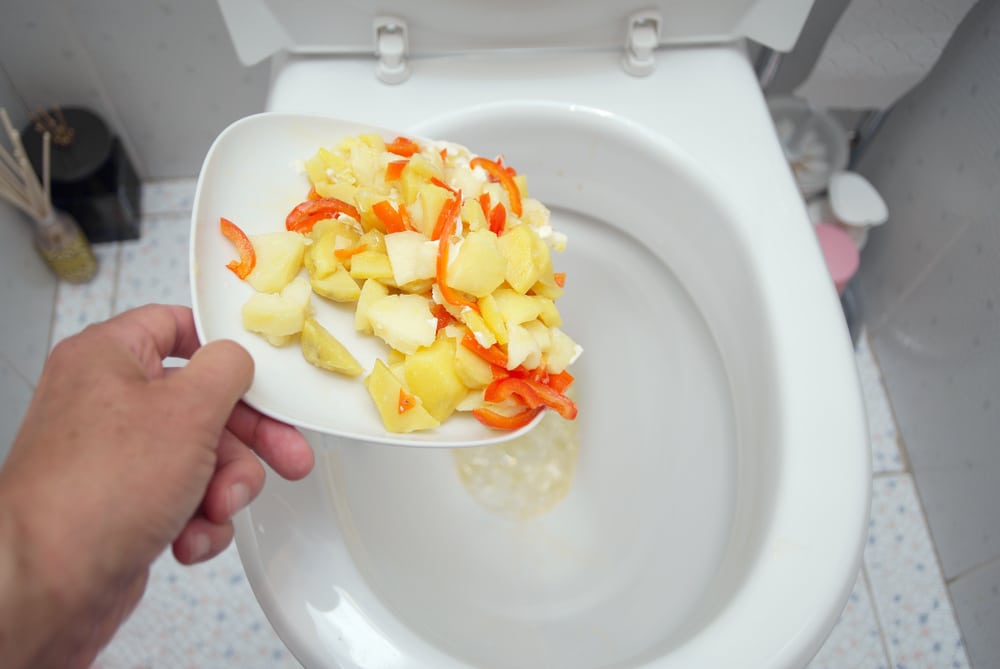Is it Permitted to Dispose of Food in the Toilet?
Is it Permitted to Dispose of Food in the Toilet?
Blog Article
Just how do you actually feel when it comes to Is it safe to flush food (especially rice) down the toilet??

Introduction
Many individuals are frequently confronted with the issue of what to do with food waste, specifically when it comes to leftovers or scraps. One typical concern that arises is whether it's fine to purge food down the commode. In this short article, we'll delve into the reasons why individuals may take into consideration flushing food, the repercussions of doing so, and alternate techniques for appropriate disposal.
Reasons that people may consider purging food
Absence of awareness
Some people may not recognize the potential damage brought on by flushing food down the commode. They may mistakenly think that it's a safe method.
Comfort
Flushing food down the commode may seem like a fast and easy option to throwing away unwanted scraps, especially when there's no nearby trash can available.
Idleness
In many cases, individuals might simply select to flush food out of large idleness, without taking into consideration the repercussions of their activities.
Effects of flushing food down the toilet
Ecological influence
Food waste that winds up in waterways can contribute to air pollution and harm marine environments. In addition, the water made use of to flush food can strain water resources.
Pipes problems
Flushing food can result in clogged up pipelines and drains pipes, causing expensive pipes repair work and hassles.
Sorts of food that ought to not be purged
Fibrous foods
Foods with coarse structures such as celery or corn husks can obtain tangled in pipes and cause blockages.
Starchy foods
Starchy foods like pasta and rice can soak up water and swell, leading to blockages in pipelines.
Oils and fats
Greasy foods like bacon or food preparation oils ought to never ever be purged down the commode as they can solidify and cause blockages.
Proper disposal methods for food waste
Making use of a garbage disposal
For homes equipped with garbage disposals, food scraps can be ground up and flushed with the plumbing system. Nevertheless, not all foods appropriate for disposal in this fashion.
Recycling
Certain food packaging products can be reused, decreasing waste and decreasing ecological influence.
Composting
Composting is an environment-friendly way to get rid of food waste. Organic products can be composted and utilized to enrich soil for horticulture.
The relevance of correct waste monitoring
Decreasing environmental damage
Proper waste management methods, such as composting and recycling, aid decrease air pollution and protect natural resources for future generations.
Shielding plumbing systems
By preventing the technique of flushing food down the bathroom, property owners can protect against costly plumbing repairs and preserve the stability of their pipes systems.
Conclusion
In conclusion, while it may be appealing to flush food down the commode for ease, it's important to understand the possible effects of this action. By taking on appropriate waste monitoring methods and disposing of food waste properly, people can contribute to much healthier plumbing systems and a cleaner setting for all.
FLUSH FOOD DOWN THE TOILET?
FLUSHING FOOD CAN CAUSE BLOCKED DRAINS IN YOUR HOME
All of the plumbing fixtures in your home are connected to the same sewer pipe outside of your home. This outdoor sewer pipe is responsible for transporting all the wastewater from your home to the Council sewer mains. Even small pieces of food that go down the kitchen sink can cause problems for your sewer. It should therefore be obvious that flushing larger bits of food, such as meat, risks a clog in either the toilet itself or the sewer pipes. Flushing greasy food is even more problematic because oil coagulates when it cools, coating the interior lining of your pipes.
THE TOILET IS NOT A BIN
Food isn’t the only thing that people shouldn’t be flushing down the toilet. People use the toilet to dispose of all kinds of things such as tampons, makeup wipes, dental floss, kitty litter and even underwear. Water goes to great lengths to educate residents about the high costs and stress placed on wastewater treatment systems simply from people flushing the wrong stuff down the toilet. It costs taxpayers millions of dollars each year, and homeowners thousands in blocked drain repairs.
FLUSHING FOOD IS A WASTE OF WATER
Flushing food is a waste of our most precious resource - water. In June this year Level 1 water restrictions were introduced to protect water supply from drought conditions. Much of New South Wales continues to be affected by prolonged drought with recent figures revealing up to 97 per cent of the state remains in drought. Depending on whether you have a single or dual flush toilet, every single flush uses between five and 11 litres of water. In the current climate this is a huge amount of water to be wasting on flushing food that should be placed in the bin (or better yet, the compost).
https://www.jabplumbingsolutions.com.au/blog/can-you-flush-food-down-the-toilet

I came across that piece about What Can Happen If You Flush Food Down the Toilet? while looking around the web. Sharing is good. Helping others is fun. Many thanks for taking the time to read it.
Schedule Services Report this page